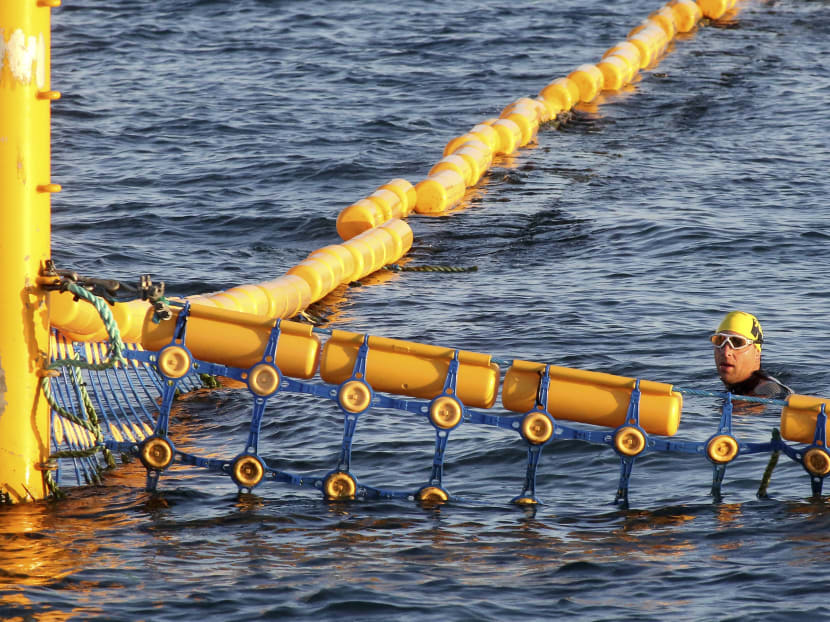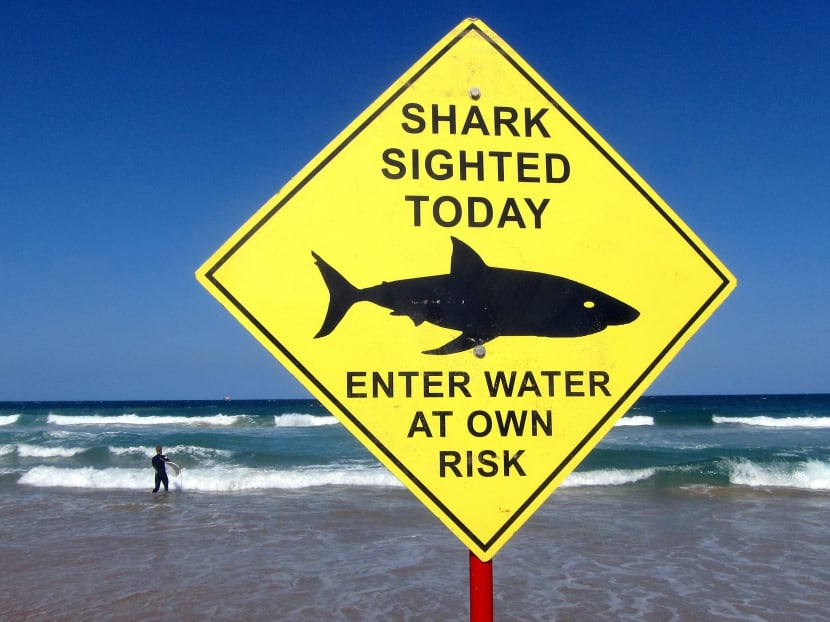A surfer is killed, and Australia asks: Do more sharks need to die?
SYDNEY — The state wants to subsidise surfers who buy electromagnetic devices to repel sharks. Other voices insist on deploying nets or hooks to catch and kill them. One hunter has proposed dispatching a rapid-response team on helicopters to “just shoot the shark in the head.”


SYDNEY — The state wants to subsidise surfers who buy electromagnetic devices to repel sharks. Other voices insist on deploying nets or hooks to catch and kill them. One hunter has proposed dispatching a rapid-response team on helicopters to “just shoot the shark in the head.”
The death last week of Laeticia Brouwer, a 17-year-old surfer, in a shark attack off Australia’s southern coast has renewed debate in the country over what, if anything, should be done to protect people who venture offshore in a place mad for watersports. Fourteen people have been killed by sharks nationwide since the start of 2012.
Last week, the federal environment minister, Josh Frydenberg, accused Western Australia, the state where the last three fatal attacks occurred, of failing to respond to the problem. “The commonwealth would welcome any proposal to protect human life first and foremost,” he said, suggesting culling or other measures as the state saw fit.
Mr Vic Hislop, a former shark hunter from Queensland, called for the helicopter strike teams in an interview with News.com.au, warning, “As they continue to let the sharks escape after they eat somebody, it’s going to get worse and worse. Make no mistake.”
But Western Australia denies that killing sharks would be productive. Last week, the state fisheries minister, Dave Kelly, said that culling did not “actually make our beaches any safer.” And its premier, Mark McGowan, said people would always face a very small risk of being attacked in the ocean, calling it a “harsh reality.”
Culling is controversial because many shark species are endangered: Perhaps 100 million sharks are killed every year, often for their fins. Hunting of vulnerable types, including the great white shark, is prohibited, yet states can seek exemptions if they think attacks are threatening people or tourism revenue.
In 2014, Western Australia used baited drum lines - hooks suspended between a float and the ocean floor - to trap sharks after a series of attacks. Sixty-eight of them, all measuring more than 10 feet, were shot before the policy was revoked over ecological concerns. In Queensland, where drum lines have been used for decades, scientists say that there is little evidence to show that they have reduced the danger.
Some beaches are protected by nets designed to catch sharks before they come too close to shore. New South Wales snagged 133 “target” creatures in mesh along its northern coast from 2015 to 2016, and the majority of those died. The state government says only one person has been killed by a shark in netted bays between Newcastle and Wollongong over the past 70 years. But because attacks have always been relatively uncommon, it is hard to show that these measures are saving lives, and scientists abhor them for killing other endangered species.
“If you kill all the sharks you won’t have any attacks, but you don’t take every car off the road just because some people crash,” said Nathan Hart, an associate professor of biological sciences at Macquarie University.
“Lethal methods are entirely political tools, not public safety tools,” added Dr Christopher Neff, a lecturer in public policy at the University of Sydney. “There’s not enough evidence to show that they work.” He said his research revealed that three-quarters of Australians living in shark-afflicted parts of Western Australia preferred nonlethal approaches anyway. Like many other surfers, Brouwer would have been among them: At her memorial, her parents said that she “loved the ocean with all that it contained.”
Instead of deploying drum lines, Western Australia’s government said that it would now subsidise 1,000 Shark Shields, paying about a quarter of the cost. Tests on the personal devices, which emit a short-range electromagnetic field into the water, found that they could prevent “investigative” attacks by curious sharks but did not stop ambushes by determined predators in hunting mode.
Experts testifying at a federal Senate hearing in Perth on Thursday (April 20) said that more research into individual deterrents was required.
States and territories already pour millions of dollars into helicopters and drones to keep watch for predators, although they can only spot those swimming close to the surface. The Commonwealth Scientific and Industrial Research Organization, a national research agency, has tagged 210 great white sharks to better understand their movements. Other technologies are also evolving, Assoc Prof Hart said. He cited early research into camouflaged wet suits and “counter-illumination” surfboards, whose undersides emit light to diminish their silhouette.
New South Wales is testing smart drum lines that send alerts to officials, allowing animals to be tagged, towed and released in deeper waters. Scientists using this method in Brazil reported a 97 per cent decline in bites in the deadly waters off Recife, at the country’s eastern tip. Mr Neff said that surface-to-seabed enclosures, which are popular in Hong Kong, could be better used on “low-energy beaches” in Australia. In South Africa, flags are erected to warn swimmers when aerial surveillance is likely to be ineffective because of poor weather, he said.
According to the Australian Shark Attack File, administered by the Taronga Conservation Society Australia, there were an average of 6.5 unprovoked attacks per year in the 1990s, most of them nonfatal, but 22 in 2015.
There is no evidence to suggest that the perceived uptick in attacks is caused by a growing population of sharks, or that the creatures are coming closer to the shore, Mr Neff argued. Certainly Australia’s human population is growing, and people spend more time in the water. On a per-capita basis, the chances of being killed by a shark have almost never been lower, said Mr George Burgess, curator of the International Shark Attack File in Florida.
Two people died in attacks in Australia in 1950, when 8.3 million people lived in the country and there were far fewer tourists than today. Last year, with the population at 24 million, the number of fatalities was the same. Improved emergency responses also mean that victims are more likely to survive than in the past: 90 per cent did in the decade ending in 2011, compared with 55 per cent in the 1930s.
Australians are more likely to drown in the bath than be killed by a shark. “Part of the challenge is to make sure people understand that when they enter the water, there are risks. It’s not a backyard pool,” Mr Burgess said in an interview. “It is incumbent upon us to use the brains that we have been endowed with to avoid the teeth that the shark has been endowed with.” THE NEW YORK TIMES






